Associations and institutions are welcome to apply to become members of the ALCC.
Copyright protection is designed to facilitate the commercial exploitation of creativity.
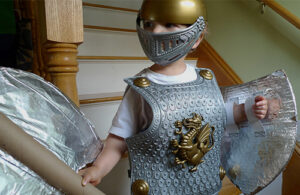
A key element of copyright is protecting creative outputs.
Photo: Juhan Sonin. CC BY 2.0. Full attribution information below.
Broadly, copyright protects literary works (books, magazine articles, etc), dramatic works (theatre and dance), music (songs, compositions, etc), artistic works (paintings, drawings, photographs, etc), films, sound recordings and broadcasts.
Copyright is free and automatic, but what material does it protect? The Copyright Act identifies two categories of material that are protected – works and subject matter other than works.
There are also some general requirements that must be met for any material to be protected. If you are unfamiliar with those requirements you should read that information first.
Works

There’s four types of works protected by copyright.
Photo: TheGabeC. CC BY 2.0. Full attribution information below.
Part III of the Copyright Act relates to works. Under the Act, copyright protects original:
These terms may seem straightforward but what can fall under each type range from obvious to obscure. The sections below look at each type of work in more detail and provide some examples of materials that fall within each type of work.
Literary works

Books are a type of literary work.
Photo: David Masters. CC BY 2.0. Full attribution information below.
Basically anything reduced to writing which is not trivial in content is a literary work. This includes:
- Books, both fictional texts such as novels and novellas and nonfiction texts such as historical nonfiction, biographies, autobiographies and memoir, textbooks, technical manuals and instructional guides.
- Articles published in newspapers, magazines, journals, etc
- Anthologies, compilations and collections of written works including newspapers, reviews, magazine, journals and similar periodical, as well as encyclopaedias, dictionaries, year books or similar works and works written in distinct parts by different authors or incorporating works or parts of works of different authors are incorporated
- Essays, dissertations, theses and other academic papers
- Grey literature and other content not subject to peer review published by universities, research organisations, governments, businesses and nonprofits such as the findings of research, conference proceedings, technical standards, interview transcripts, etc
- Poetry, limericks, haiku, sonnet, ballard, villanelle, odes, elegies, free verse, etc, as well as song lyrics (separate to the musical work)
- Artefacts of playwriting such as stage play/theatrical scripts (for theatre) and libretto (for extended musical theatre works such as for opera, operetta or musicals), whether playtexts or scenarios
- Artefacts of screenwriting such as screenplays/film scripts (for films) and teleplays (for television), synopses, scriptments, etc
- Letters, diaries, journals, notes, etc
- Operational documents published by universities, research organisations, governments, businesses and nonprofits such as business plans, strategic plans, annual plans, newsletters, memos, briefings, policy and procedure documents, technical standards, user guides, compliance and regulatory documents and other documents
- Text published on websites, including blog posts, Facebook status updates, tweets on Twitter, etc
- Text on flyers, brochures, pamphlets, catalogues, advertising materials and other ephemera
- Computer programs, i.e., a set of statements or instructions used directly or indirectly in a computer to achieve a certain result
- Tables and compilations of information expressed in words, figures or symbols such as a database, catalogue or directory.
So long as they are ‘original’ other written content such as emails, SMS text messages and instant chat messages may also be literary works.
Importantly, literary works also includes manuscripts, the handwritten or typed text by the author before the material has been published.
Dramatic works

Performing arts are protected as dramatic works.
Photo: Mickey JT. CC BY 2.0. Full attribution information below.
Dramatic works are any work that is intended to be performed theatrically. Dramatic works may be:
- Dance, choreography and movement, though it must be in a material form such as expressing it in choreographic notation or recorded in a video
- Theatrical productions such as stage plays, soliloquies, puppetry, pantomimes, mime, dumb shows, etc (separate to their scripts, which are literary works)
- Film treatments and scenarios for a film (separate to the film).
Musical works
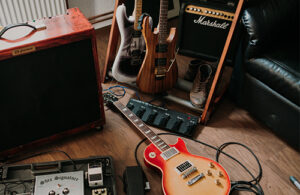
Music is also one of the types of Works protected by copyright.
Photo: Nenad Stojkovic. CC BY 2.0. Full attribution information below.
The Copyright Act does not define ‘musical work’. However it is taken to encompass the melody of the song. As such, a musical work may include:
- Musical scores for performance by musicians, bands, orchestras, ensembles and other musical acts
- Musical scores that are part of a concert, opera, etc
- Songs, jingles, ditties, lullabies, hymns, etc
- Instrumental music.
Of course, copyright only protects music and lyrics if they are in a material form such as writing down lyrics or expressing music as choreographic notation, or recording both in a sound recording.
Where a song also includes written lyrics they are typically considered a literary work and are protected separately to the musical work. If the music has been recorded then the sound recording of the performance of the song exists and will be protected separately.
Artistic works

Artistic works are the last type of work protected by copyright.
Photo: Dean Hochman. CC BY 2.0. Full attribution information below.
The Copyright Act provides a list of things that are considered artistic works, including:
- Paintings
- Sculptures, including a cast or model made for purposes of sculpture
- Drawings, which includes diagrams, maps, charts or plans
- Engravings, which includes etchings, lithographs, products of photogravure, woodcuts, prints and similar works (that are not photographs)
- Photographs and products of processes similar to photography, including products of xerography
- Buildings and models of buildings, where ‘building’ includes a structure of any kind
- Works of artistic craftsmanship, including the works of craftspeople working in many media such as silversmiths, potters, woodworkers, hand-embroiderers and many others. This likely takes in handmade jewellery, handmade ceramics, woodwork and embroidery. Importantly, works of artistic craftsmanship are not confined to handicraft only.
Subject-matter other than works
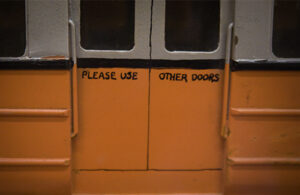
Copyright also protects subject-matter other than works.
Photo: Orin Zebest. CC BY 2.0. Full attribution information below.
The Act also protects Subject-matter other than works. These are are outlined in Part IV of the Copyright Act. The following are subject-matter other than works:
Sound recordings

Sound recordings are protected by copyright.
Photo: Dejan Krsmanovic. CC BY 2.0. Full attribution information below.
A sound recording is the aggregate of the sounds embodied in a record. That means sounds stored on recording media such as cassette tapes, CDs or computer hard drives are sound recordings and attract copyright protection.
Sound recordings may include:
- Recordings of music and songs
- Recordings of a live performance, such as dance or theatre, reading a literary work aloud or an expression of folklore
- Recordings of lectures, seminars, workshops and other presentations as well as interviews, conversations and oral histories
- Podcasts and audio on websites
- Instructional sound recordings
- Soundscapes and field recordings of natural or urban environments
A sound recording is protected separately to any underlying works they include, such as the song or composition. They are protected regardless of the format in which they were recorded, exported as or later converted into.
Films
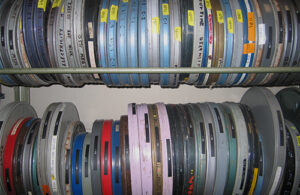
Analogue and digital films are protected by copyright.
Photo: lorelei. CC BY 2.0. Full attribution information below.
A film is the aggregate of visual images embodied in an article or thing capable of being shown as a moving picture, including the aggregate of the sounds embodied in a soundtrack associated with the visual images. That means visual images and sounds that together comprise a film are protected by copyright.
Films may include:
- Feature films
- Documentaries and factual content
- A film of a television program (separate to the broadcast)
- Animation and moving image cartoons
- Short films, video clips, mobile phone footage, etc
- Video and moving image advertising, including ads on free-to-air television, video ads online, promotional trailers of films, television programs and video games, etc
- Vodcasts and videos on websites such as web series and YouTube videos
- Educational, training and instructional videos
- Video games, including gameplay footage.
Some material capable of being shown as a moving picture, such as multimedia, may also be a film.
Films are protected separately to any underlying works like the script or any other works included in it such as photographs and clips of other films. They are protected regardless of the format in which they were recorded, exported as or later converted into.
Broadcasts
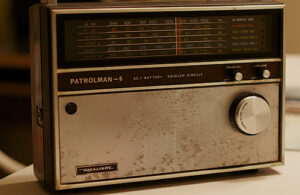
Copyright covers broadcasts as well.
Photo: Alan Levine. CC BY 2.0. Full attribution information below.
A ‘broadcast’ is a communication to the public delivered by a broadcasting service within the meaning of the Broadcasting Services Act 1992 (Cth). Broadcasting service means ‘a service that delivers television programs or radio programs to persons having equipment appropriate for receiving that service, whether the delivery uses the radiofrequency spectrum, cable, optical fibre, satellite or any other means or a combination of those means’. This includes free-to-air broadcasts and subscription broadcasts delivered by:
- A national broadcasting service i.e., television and radio broadcasts by the Australian Broadcasting Corporation (ABC) and the Special Broadcasting Corporation (SBS)
- A commercial broadcasting service i.e., television broadcasts by Seven Network, Nine Network, Network Ten and their affiliates, radio broadcasts by commercial radio services such as and pay TV operators such as Foxtel
- A community broadcasting service i.e., community radio broadcasters and community television broadcasters
- A broadcasting service that just transmits program material supplied by National Indigenous TV Limited.
Currently material made available by on-demand online video streaming services such as Netflix, Stan and Disney+ and others are not within the scope of ‘broadcast’. This is because a series of ministerial determinations (the most recent of which was dated 13 September 2022) have specifically excluded services that makes available television programs or radio programs using the internet (unless the service is also a broadcasting service under the Broadcasting Services Act).
Published editions of works
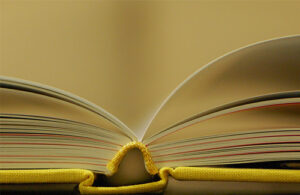
The layout of a published work is protected by copyright.
Photo: bradleypjohnson. CC BY 2.0. Full attribution information below.
The Copyright Act also extends protection to published editions of one or more literary, dramatic, musical and artistic works. A published edition relates to the arrangement that makes up the layout and formatting of published material.
A book is probably the most obvious example of a published edition. The typographic arrangement such as font selection, sizing, weight, leading and tracking, the number and configuration of columns, the size of the margins and gutters, the size, weight and spacing around headings, the placement of visual elements such as photographs, illustrations and diagrams, as well as typesetting, page layout, pagination, cover design and other elements that make up the look and feel of that published version of the book make up the published edition. Importantly, it is the combination of the typographical elements of the book that make up the published edition, not these elements individually. The same story may be published in another edition by another publisher with their own design and layout (attracting its own right to that published edition).
The right to protect published editions from reuse exists separately from rights attached to to the work or works included in the edition.
Layers of copyright in material
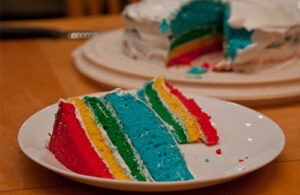
Like this rainbow cake, content can have layers of copyright material included in it.
Photo: Mark Bonica. CC BY 2.0. Full attribution information below.
It is worth noting that material may incorporate multiple copyright protected works and/or subject-matter other than works. These underlying works create layers of copyright protection in the same item. Here are some examples of items that potentially includes multiple copyright-protected material:
- Books – the author’s manuscript is a literary work and the layout, typesetting and design of the book is a published edition. If the book includes photographs, artworks, drawings, illustrations, diagrams and maps, each will be protected separately as an artistic work. So is any artwork or photographs included on the covers.
- Translations – includes the original story as a literary work, and the translated version as a separate literary work.
- Sound recordings of songs – includes a musical work and a literary work if there are lyrics. The sound recording itself is also protected. And the musicians performing the song will also have performer’s rights.
- An album – each track is protected both as a musical work and a sound recording. If each song also includes lyrics, each set of lyrics are literary works. Plus the album cover and booklet may include literary and artistic works such as a written statement, artwork and band photography. If you consider that your average album has around 12 tracks, all with these multiple layers, the number of copyright works can build up quickly!
- Films – the film is protected in its own right, but it is very likely the film will also incorporate other copyright material such as music (where each song is a musical work and a sound recording), other sounds, artwork, photography or clips from other films or broadcasts and the script as a literary work.
This can add complexity to clearing rights, as copyright protected material may have different owners and different types of copyright-protected material have different copyright durations.
Crown copyright

The crown (or the state) also is the copyright owner of material in some circumstances.
Photo: Tim Green. CC BY 2.0. Full attribution information below.
There is also one final category of copyright material worth mentioning: Crown copyright. Crown copyright is any original works, sound recordings or films:
- made by the State
- made under the direction or control of the State or
- first published in Australia by the State.
‘The State’ is the Commonwealth Government or the government of a State or Territory. It does not include local government authorities.
The Crown is the copyright owner of Crown copyright material.
What material isn't protected by copyright?
It may seem like copyright covers everything but there are things that aren’t protected by copyright. To learn more about what isn’t protected see: Material not protected by copyright.
